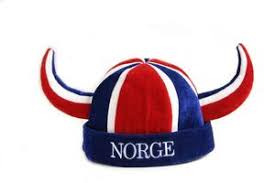Åsne and Aage in the Orient
BY SARA HØYRUP
In the wealthy and peaceful Norway, two writers born half a century ago in affluent families have taken a keen interest in conflict zones. The highly educated Åsne Seierstad and Aage Borchgrevink share a surprisingly sloppy prose, but their approach to their study objects are worlds aparts.

Where Seierstad is shiny and self-centered, Borchgrevink is serious and empathic. While Seierstad is brimming with contempt for the premodern societies, they fill Borchgrevink with a longing away from the overly quiet and feminized Scandinavian reality. Seierstad always choses a marvellous title for her books. She has a sixth sense for the topic most in vogue, while Borchgrevink tries to tell the world what he believes it should know.
Borchgrevink is, after all, employed in a human rights organization, while Seierstad’s background is as a fast and furious TV journalist. ”She has X-factor,” Borchgrevink once said to me with resignation, too much of a gentleman to critisize his rival. Her books are a form of Reader’s Digest of complex conflicts that become quite simple in her account: her narrative embody the concept of a clash of civilizations, and she holds no doubts that the Norwegian way of life is the only acceptable one.
The hugely succesful Seierstad indulges in arrogant terms such as habibilåter (habibi-songs meaning Arab love songs) and uses real life events and persons to create socalled ”non-fiction novels”: a risky mixing of genres that has gotten her into trouble more than once. She tells her readers about real people and claims to know what they think. She changes scenery to fit her purpose, and so there are serious discrepancies between different translations of her books.
But it works wonders with the readers. Borchgrevink, on the other hand, has a tougher time getting a Western audience interested in his complex narratives from the East.
Macho islam
When Seierstad went to Afghanistan, she was scandalized that this far away country did not uphold the feminist ideals that she as a middleclass Norwegian holds dear. When Borchgrevink went to Chechnya, he was impressed with the manliness of the rebels and painfully aware of his own perceived inadecuacy in this respect.
Both places are Muslim and war torn. Afghanistan had first fought a Soviet invasion for a full decade, only to fall into the hands of warlords and the fundamentalist Taliban formerly backed by the West. More recently, it was invaded by the United States of America, supposedly for harbouring the 9/11 mastermind Osama bin Laden. Chechnya is part of Russia itself and run by autocratic Ramzan Kadyrov, installed and held in place by Russia’s President Vladimiar Putin to keep order in the rebellious region. Chechnyans are supposed to be the perpetrators of terrorist acts in European parts of Russia.
When Seierstad went to cover the war in Irak, she could not for the life of her understand why a French colleague called his mother every night to assure her he was still alive. And she told us all about it in One hundred one days, the book she later published on her personal war experience as a reporter, with a shocking scorn so characteristic of her view of people around her.
She shows no care for her interviewees. She told her international audience every detail of specific women’s secret life in a recognizable family in fundamentalist Afghanistan. She clearly believed that she was doing them a grand favour, teaching them feminism and freedom. Instead, she took away the little freedom they had secretly and courageously built up for themselves by revealing it.
Parallel productions
When Borchgrevink wrote insightful books on the Balkan wars that no-one read, Seierstad published With Their Backs to the World on Serbia and saw it translated into several languages. When Borchgrevink gave us Den usynlige krigen [The Invisible War] explaining the complex reasons and treasons involved in the Chechnya conflict, Seierstad gave us The Angel of Grozny centered on an orphanage.
When he centered on the terrorist Anders Breivik, Norway’s extreme right ”Christian” Muslim hater, and gave us A Norwegian Tragedy, she gave us One of us. Borchgrevink took the trouble to study the terrorist’s 1,500 pages long, rambling ”manifest” and self-justification, and reached surprising conclusions through his literary analysis of it. A feat not even the two psychiatric teams involved in the court case against Breivik could boast. For the first time ever, Borchgrevink’s book sold and got translated into other languages; but not by far as much as Seierstad’s rival book on the same subject matter.
Coloured glasses
When Åsne and Aage from Norway go East, they wear different spectacles and therefore see different things. When they come back home to tell the West about the East, they abide by entirely different ethical standards and narrative strategies.
And judging from the book sales and the publishing houses’ interest in buying the foreign rights, the readers prefer the Orientalist version of those daunting, different, backward places.
Sara Høyrup has translated non-fiction books by both authors into Spanish or Danish.
